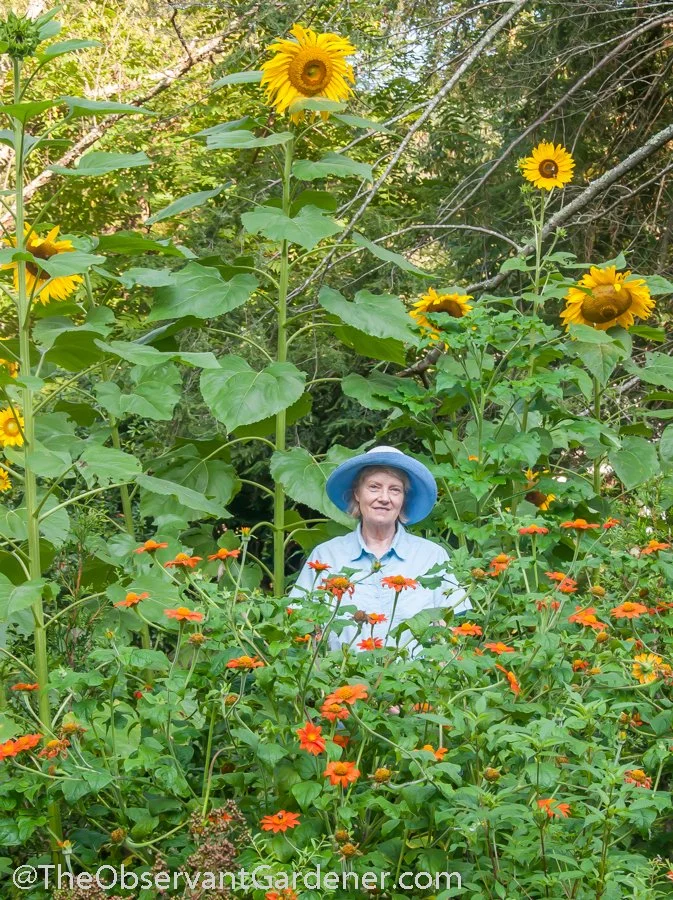The art of life lies in a constant readjustment to our surroundings.
- Kakuzo Okakura
I have learned over many gardening seasons that the landscape of my yard is constantly changing. Over the course of months and sometimes even years, the trees and plants are always either growing or dying. These changes happen slowly and incrementally, but they are real and they add up.
Rethinking My Garden
As an example of this change, one day I realized that a part of my yard that had always been sunny could no longer support plants that needed full sun. This was a spot where I had successfully grown tithonia, a tall and wide shrub also known as the Mexican sunflower. For three years tithonia grew well in this location. Then one summer I noticed that the plant was leaning over, as if straining to reach the sun. The next year it was not producing flowers. I looked at the surrounding evergreen trees, and realized how dramatically they had grown during the previous five years. To my amazement I realized that this sunny spot had now become a shady spot!
I was forced to rethink what I would plant there. I had assumed that once I got to know a section of my yard, that the light there would not change, but I was wrong. So, this spring I transplanted many shade-loving hostas to this location. It is my new shade garden.
Another time two years ago, a snowstorm with high winds uprooted three large trees in my side yard. The next day, as I stood surveying the fallen trees, I could see a new kind of garden immediately in my mind's eye. I realized that this area, which had been covered by the trees, now had the possibility to become a full sun garden. Since I had previous experience with changes in my yard, I began to make plans for this area.
Making a New Pollinator Garden
I decided to create a place that pollinators would love by planting a variety of sunflowers as well as gold and orange tithonia. This new garden, with sunflowers as high as twelve feet, was a joy for me all summer. I watched the sunflowers grow from seeds, then mature, then reach for the sky as they towered over me. Some sunflowers produced multiple branches with many blooms. They kept blooming all summer.
Meanwhile, the tithonia also grew rapidly. On a hot dry day they seemed to double in size. By mid-July they began to produce their vibrant gold and orange blooms, which attracted many bees and butterflies. The pollinators just kept coming, from early morning to dusk. This spot was full of activity and beauty.
There are times when I reflect on the changes in my yard, realizing that much of what I learn from gardening I can apply to my own life. When unexpected events happen, like the trees falling, I need to adapt to the change. We have all experienced life taking a turn we don't see coming. Can we be flexible to accommodate a new situation? Can we see things from a new perspective? These are important questions. I look to my garden for lessons on how to adapt to change.
This article appears in The Laurel of Asheville. Follow @TheObservantGardener on Instagram to see new garden photos daily!

